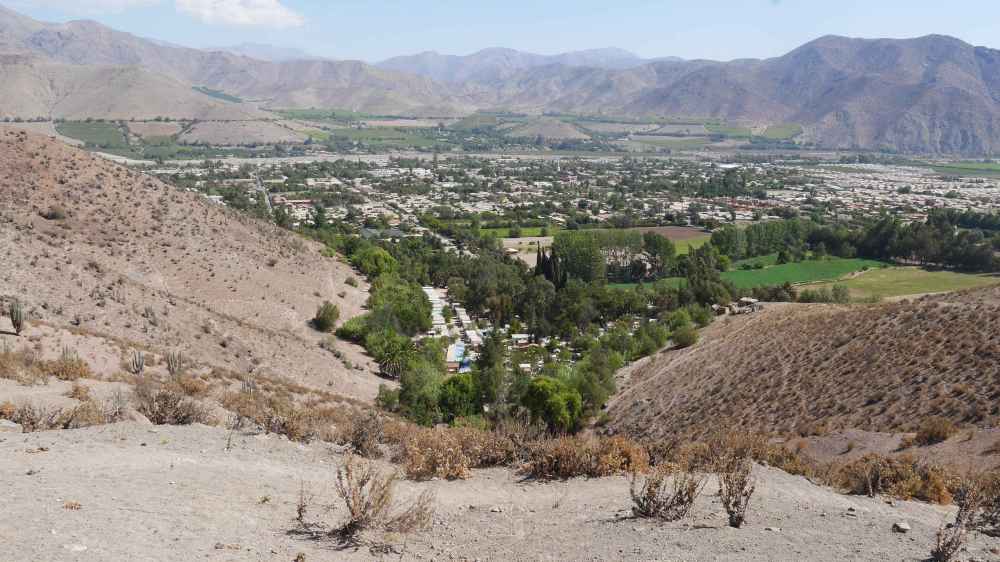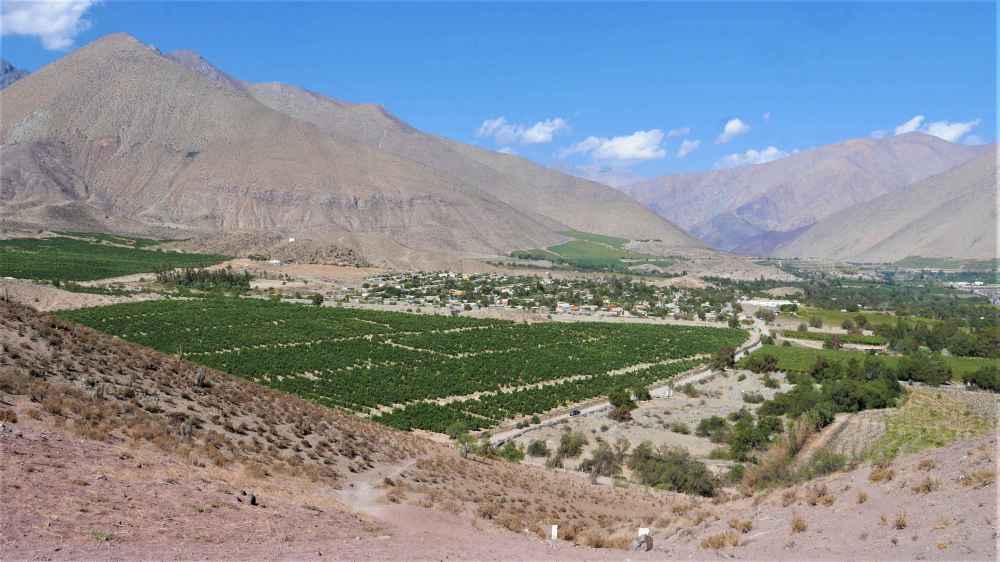Although going there meant a big detour in our travel itinirary, the small isolated town of Vicuna, 12 hours North from Santiago, was a definite highlight. It is also known for its proximity to the abundant wineries and pisco distilleries in the Elqui Valley region, being bathed in sunshine throughout the year. Our reason for going was quite different: we were intent on visiting some of the many international observatories in the area. Thanks to its high surrounding hills and clear skies, Vicuna is the perfect location for these. In fact, the closest observatory is less than 10 km away.

Chile in general is host to most of the biggest telescopes in the world. We were excited to expand our very little knowledge about the night sky, and see the sophisticated machinery and telescopes in action. It was quite an operation scheduling the right time to go, as we were travelling around the full Moon, which is not the best time to go star-gazing!
We arrived early in the morning, having travelled by night bus from Santiago. We chose the only cheap hostel in town, booked our observatory tour, shopped for food, rested and caught up on internet and reading until the afternoon heat started subsiding. We took advantage of the remaining daylight to walk up the surrounding hills to take in the view over Vicuna, the cactus fields all around, and the Elqui Valley vinyards on the other side.


After dinner, it was time for our highly-anticipated tour! It went off to a bad start, as it was very nearly cancelled due to a long power outage at the observatory. The observatory we visited was Mamallurca, the most popular due to its high capacity. The more exclusive tour of the Del Pangue Observatory, which is newer and still in use, was unfortunately fully booked.
As soon as we were out of town, we were immediatly amazed by how clearly we could see the stars and the dense Milky Way, as well as other galaxies, against the deep black sky. We were highly impressed by our tour guide as he was an actual astronomer with 25 years experience, and passionate about his work. We started off outside where he gave us a riveting hour-long class, pointing out planets, stars, clusters and constellations with his laser, explaining how to identify them and the significance of reddish or blueish tint in the colour of the stars (red = dying, blue = new star) and teaching us the differences between the night skies of the Southern and Northern Hemispheres (only parts of the South cannot be seen in the North, and vica-versa, the North Star and Southern Cross are typical examples).
The first constellation he showed us was Orion, then Taurus, and within it, one of the oldest stars in the sky, Betelgeuse, noticable by its definite orange glow. And close by, one of the brightest stars in the sky, big blue Syrius, and clockwise from there all the other constellations (Gemini, Cancer, Leo, and a bit of Virgo), half of which would only appear later on in the night. The astrological order of these constellations matches their geographical position ‘from left to right’, and just as they say “when you were born your Mercury was in Libra”, this is because throughout the night, the planets rise and set like the Sun and Moon, moving over the constellations as they do so (my sister studies in-depth astrology, which is why I found this explanation so interesting). On the opposite side from where we started was the stupendous Milky Way, so dense with sparkling stars that we could hardly see the dark sky behind it. We saw Alpha Centauri at the bottom of the Milky Way, the closest star to Earth (after the Sun), and to the right from there, the famous Southern Cross, in the shape of a kyte. Our guide explained to us how to find the South using the Southern Cross, as in the Southern sky there is no direct marker like the North Star in the North.
We then went inside the observatory where the guide could operate the rotating roof and sliding shutters, as well as the huge telescope itself, via a tiny remote control. The control had pre-programmed coordinates for all the stars and constellations in the sky, and for each time-stamp, so he only had to select one of these as a target for the telescope to point automatically towards it. Very impressive technology. We got to look inside the telescope at star clusters, and nebulae and galaxies that look like single stars with the naked eye. Some star clusters were comprised of up to 200 stars, all amazingly moving in unison across space.

We went outside again where we used smaller manual telescopes to observe Jupiter close-up (my favourite part as we could see all its stripes and moons orbiting around it), aswell as our Moon, just rising, its desert-like surface disfigured by giant craters. With this telescope we could take a photo through the lens with our phones, and here is the result:

The last part of the tour was a demonstration of software astronomers use, called Stellarium. It simulates a view of the night sky at any time in the past or furture, allowing them to predict the exact position and physical properties of each planet, moon, star, cluster, constellation and galaxy visible from Earth. It is quite amazing to think of all the calculations and data that has gone into this software, knowing that it is actually open-source, so free to download by anyone off the internet! The presentation ended with a video of a view of Earth, then our position and scale compared to all the planets, and then the Sun, in the Solar System, and then compared to other Solar Systems of the nearest stars, and then the Milky Way itself, which is only a spec of dust in a group of other galaxies that form a giant spiral with millions of others, and make up the infinite Universe of which the ‘edge’, if it exists, created a few minutes after the so-called ‘Big Bang’, can only be observed via radio waves. More and more astronomers and physicists today even beleive that our Universe is but a spec of dust, an aspect, amongst countless other parallel Universes. The mind boggles!
As the tour lasted late into the night, we only left Vicuna in the afternoon the next day, litteraly with stars in our eyes! We hopped straight into a bus for La Serena, then Santiago (again!), then onwards by night bus to Temuco, our next destination.





